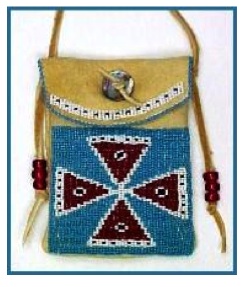Home
Theory
of The Gift Economy
|
Practice
Many Voices discuss The Gift Economy
Publications
Links
Contact Us
|
The Fractal Binaries of the Gift
by Barbara Alice Mann Women's Worlds, Ottawa, July 7, 2011 Download a PDF The base number of Western culture is ONE: One god, one life, one soul. Consequently, Western cultures use linear math and a linear exchange economy. However, Native American cultures use a base number of TWO and, as a result, developed binary math. Our binary concepts are shorthanded in the woodlands as Blood and Breath; west of the Mississippi, as Water and Air. Same thing. Next is where Westerners get really lost: Since our whole unit necessarily consists of two equal parts, what looks like ONE to Europeans looks like ONE-HALF to us. Therefore, each half must have a complementary half to make it truly ONE—at which point, it requires a companion to make our requisite Two. Thus, the Direction of the Sky consists of Two halves: East (1/2) and West (1/2). Put the two halves together, and suddenly we have the One Direction of the Sky, which, itself becomes One-half in need of its complement, the Split Sky, or North (1/2) and South (1/2). Only when the Direction of the Sky is complemented by the Split Sky, do we have One Whole. The directions may look like Four to Westerners, but, to us, they look like One balanced set. This thinking winds up in our “plus sign” motif so common in Native American jewelry. The most authentic of these motifs doubles the plus Translating all of this into a gift economy must make room for complex human interaction, besides, which is where fractals come into gifting. Fractals represent continual, self-replicating action, which is the modus operandi of the gift economy. Figure 1. Blackfeet Beaded Pouch
Figure 1. Typical Beaded Pouch, showing version of "plus sign". http://www.native-languages.org/bags.htm.Fractals are the same pattern, repeating endlessly, writ small, writ large, and writ everything in between. As far as Westerners know, the term "fractal" was coined in 1975 by Benoît Mandelbrot, and then refined as The Fractal Geometry of Nature in 1982.¹ This might have been the first that Westerners had heard of fractals, but that does not mean that no one else had thought of, or more to the point, used fractals prior to Mandelbrot. In fact, Asians and Native Americans had been well aware of fractal thinking since forever. In Figure 1, the famous painting, "Great Wave off Kanagawa," the first print of thirty-six in the series, "Views of Mount Fuji," by the Japanese artist, Hokusai (1760-1849) clearly demonstrated the concept of fractals in nature, long before Mandelbrot. Tiny fractal repetitions of waves on the larger wave crests replicate the macro-wave. Mandelbrot's fractals were not binary, but Native American fractals are. In fact, our The next image, Figure 2., below, is a plus sign Figure 1. "Great Wave off Kanagawa"
Figure 1., "SOURCE: I am indebted to "Mathematical Paintings and Sculptures," posted 12 July 2009 and accessed 17 March 2010, for picking up on this example of fractals in action.
|




 rotated into an X, with the fractal repetitions mimicking chaos. This image is courtesy of Mark Dow
rotated into an X, with the fractal repetitions mimicking chaos. This image is courtesy of Mark Dow 